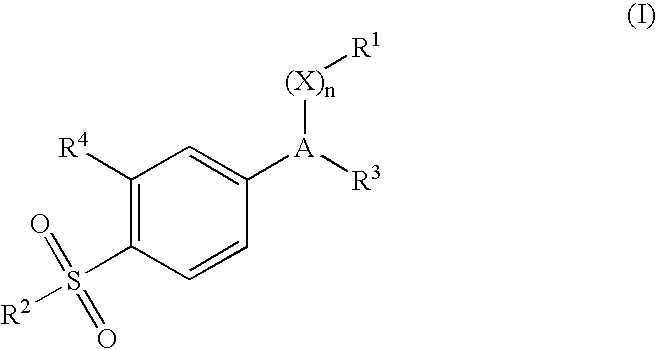Dispersible pharmaceutical composition for treatment of mastitis and otic disorders
- Summary
- Abstract
- Description
- Claims
- Application Information
AI Technical Summary
Benefits of technology
Problems solved by technology
Method used
Image
Examples
example 1
A suspension to be administered by intramammary infusion was prepared having the following composition:
ceftiofur hydrochloride (micronized)12.5 mg / mlLabrafil ™ M-1944CS 50 mg / mlmicrocrystalline wax NF 70 mg / mlcottonseed oil NFq.s.
The microcrystalline wax and approximately 27% of the total amount of the cottonseed oil were heated to 85-98° C. with mixing, in a kettle. The balance of the cottonseed oil was heated to 85-98° C. with mixing, in a manufacturing tank. After the microcrystalline wax was completely melted the microcrystalline wax / cottonseed oil mixture in the kettle was transferred to the manufacturing tank containing cottonseed oil and mixed thoroughly. The resulting mixture was cooled to 38-45° C. and the Labrafil™ M-1944CS was added to the manufacturing tank with mixing to form a vehicle. The ceftiofur hydrochloride was then added to the vehicle and the resulting composition was mixed to form a uniform suspension. The suspension was screened and filled into 12 ml hi...
example 2
A suspension to be administered by intramammary infusion was prepared having the following composition:
ceftiofur hydrochloride (micronized)12.5 mg / mlLabrafil ™ M-1944CS 50 mg / mlmicrocrystalline wax NF 100 mg / mlcottonseed oil NFq.s.
The microcrystalline wax and cottonseed oil were heated to 85-98° C. with mixing, in a manufacturing tank. After the microcrystalline wax was completely melted the mixture was cooled to 38-45° C. and the Labrafil™ M-1944CS was added to the manufacturing tank with mixing to form the vehicle. Ceftiofur hydrochloride was added to the resulting vehicle and mixed to form a uniform suspension. The suspension was screened and filled into 12 ml high density polyethylene mastitis syringes. The packaged product was terminally sterilized by gamma irradiation at a dose of 25-40 kGy.
The interfacial tension of the above suspension was determined using the drop volume technique with deionized water at 39° C. by comparison with that of a reference suspension prepar...
example 3
A suspension to be administered by intramammary infusion was prepared having the following composition:
ceftiofur hydrochloride (micronized)12.5 mg / mlLabrafil ™ M-1944CS 200 mg / mlmicrocrystalline wax NF 100 mg / mlcottonseed oil NFq.s.
The microcrystalline wax and cottonseed oil were heated to 85-98° C. with mixing, in a manufacturing tank. After the microcrystalline wax was completely melted the mixture was cooled to 38-45° C. and Labrafil™ M-1944CS was added to the manufacturing tank with mixing to form the vehicle. The ceftiofur hydrochloride was then added to the resulting vehicle and mixed to form a uniform suspension. The suspension was screened and filled into 12 ml high density polyethylene mastitis syringes. The packaged product was terminally sterilized by gamma irradiation at a dose of 25-40 kGy.
The interfacial tension of the above suspension was determined using the drop volume technique with deionized water at 39° C. by comparison with that of a reference suspension p...
PUM
| Property | Measurement | Unit |
|---|---|---|
| Fraction | aaaaa | aaaaa |
| Fraction | aaaaa | aaaaa |
| Fraction | aaaaa | aaaaa |
Abstract
Description
Claims
Application Information
 Login to View More
Login to View More - R&D
- Intellectual Property
- Life Sciences
- Materials
- Tech Scout
- Unparalleled Data Quality
- Higher Quality Content
- 60% Fewer Hallucinations
Browse by: Latest US Patents, China's latest patents, Technical Efficacy Thesaurus, Application Domain, Technology Topic, Popular Technical Reports.
© 2025 PatSnap. All rights reserved.Legal|Privacy policy|Modern Slavery Act Transparency Statement|Sitemap|About US| Contact US: help@patsnap.com



